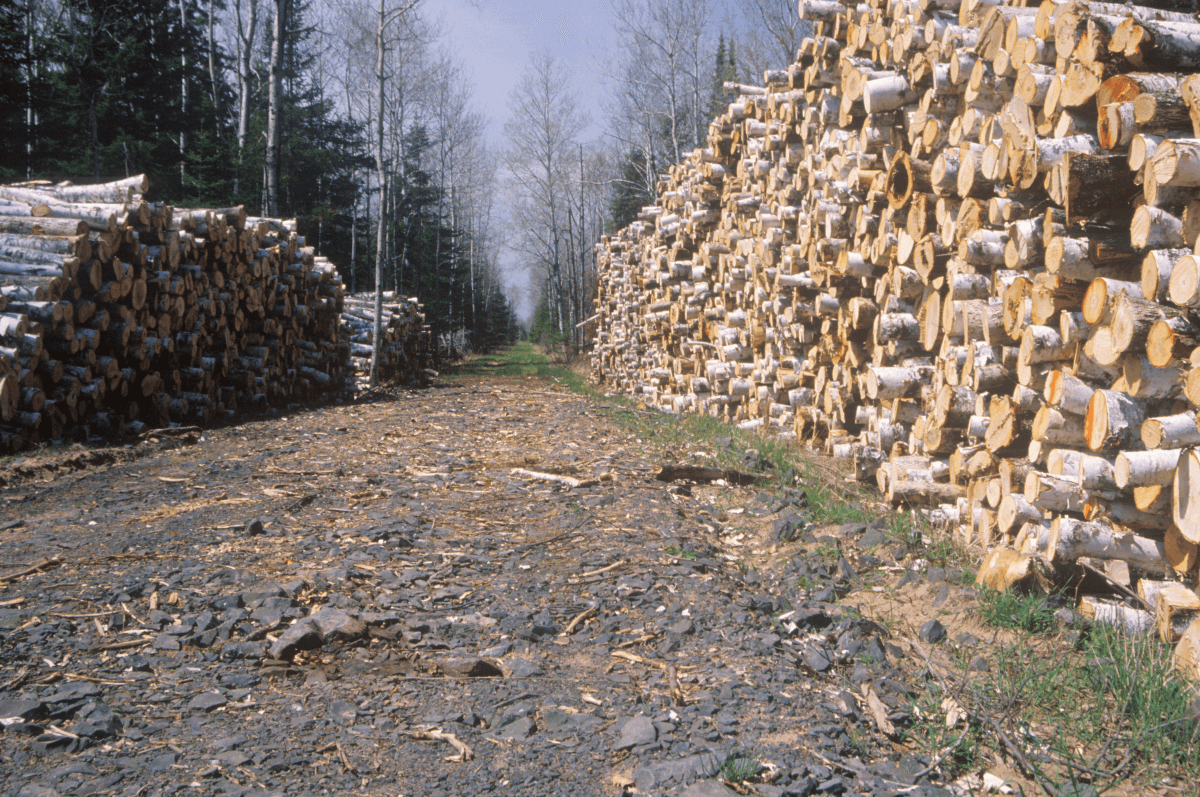Precise Forestry Management Leads to Timber Regeneration: Learn About Best Logging Practices with Matt Schultz
By Matt Schultz - UCRE | Northern Wisconsin Lifestyle Properties and Pine Curve Forestry & Wildlife Consulting, LLC.September 23, 2024

Learn about best logging practices for timber regeneration with Matt Schultz - UCRE | Northern Wisconsin Lifestyle Properties and Pine Curve Forestry
Meet Matt Schultz, owner and operator of United Country Real
Estate | Northern Wisconsin
Lifestyle Properties and Pine
Curve Forestry & Wildlife Consulting, LLC. Born and raised in the Northwoods
of Wisconsin, Schultz has a lifetime of first-hand knowledge when it comes to managing
timberland, creating wildlife habitats and the ins and outs of land properties across
the Upper Wisconsin Basin.
On top of his deep knowledge of forestry, Schultz has been
involved in the lifestyle real estate industry since 2004, providing his
clients more than 20 years of unmatched understanding and expertise. His unique
blend of thorough real estate and forestry consultation experience sets him
apart as the trusted advisor in Northern Wisconsin. Learn all about how
Schultz can help you with your timberland property in the below video.
Matt Schultz’s Approach to Forestry Management
Transcript of Video:
“Hi Everyone. Matt Schultz | Pine Curve Forestry. I wanted
to take a few minutes today while I’m on a client property doing a post-harvest
inspection to illustrate some really good forestry on both the forester and the
loggers part that are gonna make a nice enhancement in both the future timber
stand and wildlife habitat on this property.
When I marked the stand, I came across this small patch of sugar
maple regeneration that was being overtopped by the edge of the overstory pine
plantation, which had been planted in an abandoned agricultural field. This
plantation and where this spot is located is right on the edge of the old field
and northern hardwood stand that is typical of northern Wisconsin. When I saw
this during my marking, I identified it as a really good opportunity to release
this regeneration and slowly begin converting this pine stand to a natural
forest, as well as to enhance the wildlife benefits through age/class diversity
and high stem density for our young forest species.”
Schultz goes on to explain how the size of this regeneration
patch is slightly smaller than a quarter acre, but despite its size, it’s
packed with ecological potential.
Enhance Wildlife Habitats
“Some of the key features [of this property] are the dead
red pine that’s going to act as a nice wildlife snag in the middle of this
patch that will be used a perch and a foraging site for many birds,” Schultz
continued. “When that tree finally falls and comes to the ground, it’ll undoubtedly
lie in this dense regeneration and be an excellent drumming site for rough
grouse, as well as microsite for other species we don’t often think about like
amphibians and invertebrates.”
We’ve got a couple of wildlife den trees that were left.
There’s an old ‘wolfy’ sugar maple that provides a good habitat from both the den
and good forage standpoint, and on the other side of the patch, we’ve got a
large, overgrown, legacy sugar maple with several hollow cavities that are about
15 to 20 feet up in the air. These trees are a den site for flying squirrels or
other birds that may use dens like that.”
Offering food and shelter through the dead pines makes a
real difference when fostering health ecosystems. It takes careful planning and
a deep understanding of the areas flora and fauna additional to trusted and knowledgeable
harvesting teams.
Quality Logging Practices
Another key aspect of Schultz’s work as a forester is
partnering with skilled logging contractors to ensure you work with the best
people. He highlighted the work done on this particular property as being a
well-planned and sustainable approach.
“One of the things that really stand out to me is that
post-harvest at this specific location is how well the logger did in harvesting
this area to preserve and not overly-damage the regeneration. In the area, you’ll
see there are still several pine stumps with not very much regeneration around
them. That was by design. They used a Ponsse Harvester to
harvest, and they operated from the edges and reached in and grabbed those trees,
essentially lifting them right off of the stump. They did it in such a careful
manner that there literally is hardly a sapling that is damaged.”
The precise execution of this timber harvest is already
paying off. Schultz goes on to explain how there was no regeneration there when
he had gone through earlier to mark the stand.
“It’s very impressive and really outlines and shows the quality
of work that you can get from quality logging contractors. There is no doubt
that had we not had a quality contractor out here doing this work, this little
spot could’ve turned out much differently. I’m happy they took such care with
this,” Schultz said. “From here on out it’s only going to grow and establish. It’s
going to be good for the forest and good for the wildlife.”
Matt Schultz
is an expert on forestry, waterfront properties, recreational and hunting land,
residential homes and land management. His combination of experience in in the
timberland and real estate industries demonstrate how well-managed forestry not
only improved timber yields, but it also enhances wildlife habitats, ensuring
enjoyment of the land for generations to come. As part of United Country Real Estate’s
unmatched network, Schultz can advertise your properties to the most potential
buyers, as well as leverage cutting-edge technology to help you sell faster. Contact Matt
at his UCRE | Northern Wisconsin Lifestyle Properties office today to begin your
journey to your ideal property in the beautiful Northern Wisconsin.
